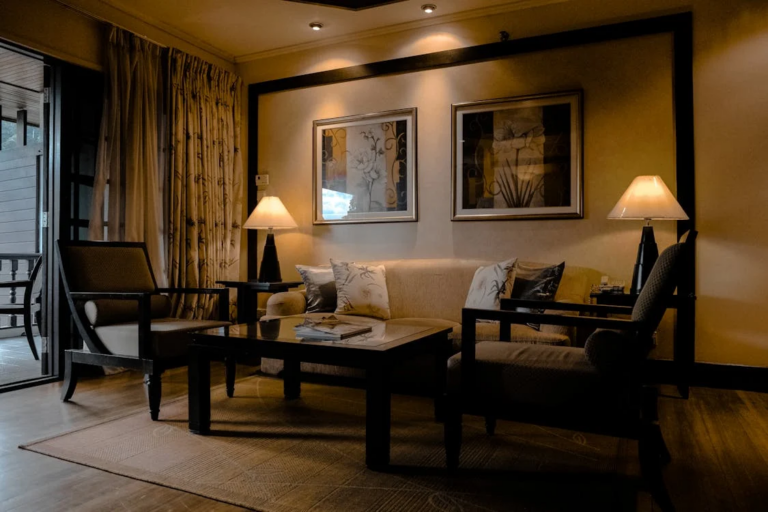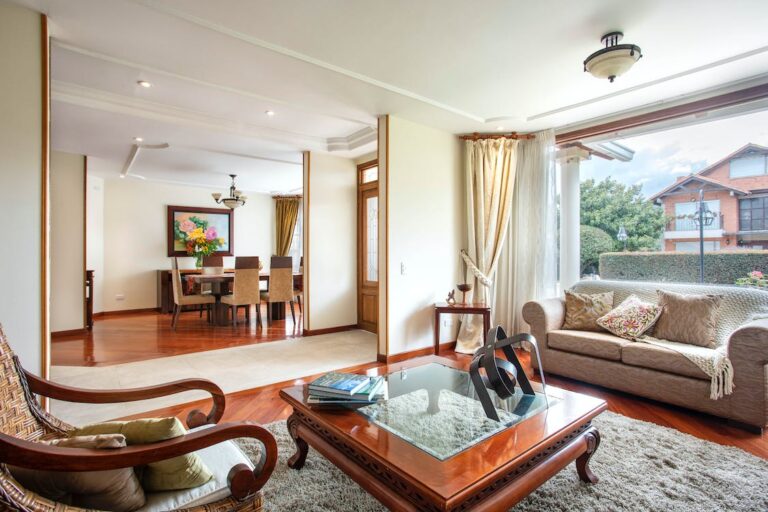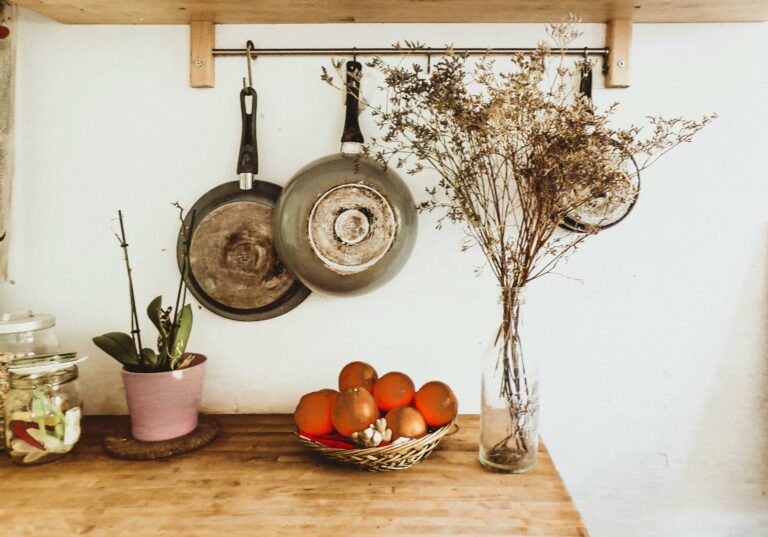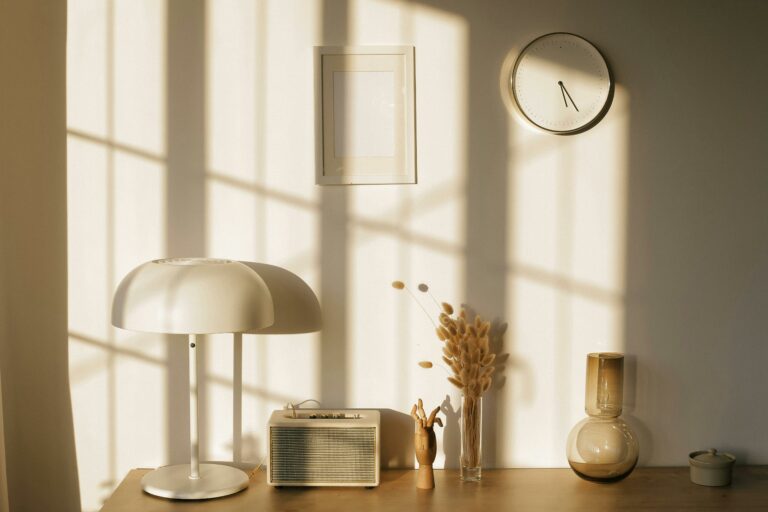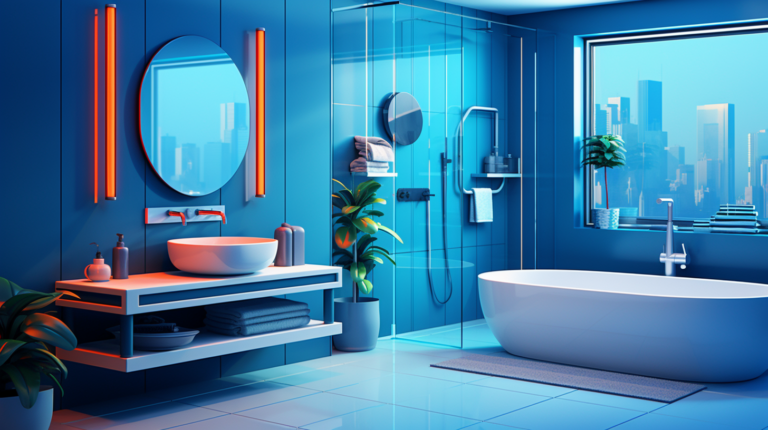Designing a Dream Kitchen: Essential Elements to Consider in 2023
Welcome to the world of kitchen design! Designing a dream kitchen is an exciting and rewarding process that allows you to create a space tailored to your unique needs and personal style. Whether you’re renovating your existing kitchen or starting from scratch, there are essential elements to consider that will ensure you have a kitchen that is functional, beautiful, and stands the test of time.
Table of Contents
- 1 Designing a Dream Kitchen in 2023
- 2 Determining Your Kitchen Layout
- 3 Choosing the Right Materials and Finishes
- 4 Lighting and Ventilation
- 5 Appliances and Fixtures
- 6 Maximizing Storage and Organization
- 7 Optimizing Functionality and Accessibility
- 8 Choosing the Right Color Palette and Style
- 9 Budgeting and Project Management
- 10 Conclusion
- 11 Frequently Asked Questions
Designing a Dream Kitchen in 2023
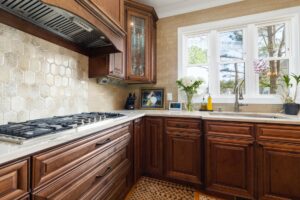
Your kitchen is the heart of your home, where meals are prepared, memories are made, and gatherings are enjoyed. It’s important to design a space that not only meets your practical needs but also reflects your aesthetic preferences. A well-designed kitchen maximizes efficiency, enhances organization, and creates a welcoming atmosphere.
In this article, we will explore the essential elements to consider when designing your dream kitchen. From determining the layout and choosing the right materials to optimizing functionality and selecting the perfect color palette, we will guide you through the process step by step. So, let’s dive in and start creating your dream kitchen together!
Determining Your Kitchen Layout
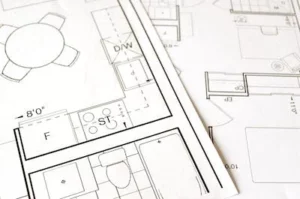
When it comes to designing your dream kitchen, one of the most important elements to consider is the layout. The layout determines how efficiently you can move around and work in your kitchen, and it sets the foundation for the overall functionality and flow of the space. So, let’s dive into some essential elements to consider when determining your kitchen layout:
Consideration of Cooking Workflow
- Think about the triangle: The kitchen work triangle is a fundamental concept that ensures ease of movement between the three main work areas – the sink, the refrigerator, and the stove. These areas should be arranged in a way that minimizes travel distances and allows for efficient cooking workflow.
- Plan for prep space: A well-designed kitchen layout should provide ample counter space for food preparation. Consider including a large central island or extra counter space close to the stove for easy access while cooking.
- Allow for clearances: Make sure to leave enough space between cabinets, appliances, and other elements to ensure smooth movement and avoid any potential obstructions.
Optimal Space Planning
- Consider the size and shape of your kitchen: Depending on the size and shape of your kitchen, you can choose from various layout options, such as the L-shaped, U-shaped, or galley kitchen.
- Utilize the work triangle: Optimize the arrangement of the sink, refrigerator, and stove to create an efficient work triangle. This configuration ensures that these key elements are within easy reach, minimizing unnecessary steps while cooking.
- Account for traffic flow: In addition to the work triangle, consider the traffic flow within your kitchen. Plan for clear paths between the different kitchen zones to prevent congestion and allow for a smooth movement of people in the space.
Efficient Storage Solutions
- Maximize cabinet space: Well-designed cabinets can make a huge difference in the functionality of your kitchen. Consider installing cabinets that reach the ceiling to maximize storage space, and utilize features such as pull-out shelves, spice racks, and tray dividers for better organization.
- Incorporate pantry space: If your kitchen allows for it, consider including a pantry for additional storage of dry goods, canned items, and small appliances.
- Think vertically: Make use of vertical space by installing wall-mounted shelves or racks for storing pots, pans, and cooking utensils. This can help free up valuable counter space and keep your kitchen organized.
By carefully considering the cooking workflow, space planning, and storage solutions, you can design a kitchen layout that not only looks great but also functions efficiently. Remember, the key is to create a space that allows for easy movement and maximizes storage options. With these essential elements in mind, you’ll be well on your way to designing a dream kitchen that meets all your needs.
Choosing the Right Materials and Finishes

When it comes to designing your dream kitchen, choosing the right materials and finishes is crucial. Not only do they enhance the overall aesthetics of your kitchen, but they also contribute to its functionality and durability. With countless options available in the market, it can be overwhelming to make the right choices. Fear not! In this section, we will guide you through the essential elements to consider when selecting materials and finishes for your kitchen.
Durable and Easy-to-Clean Countertop Options
- Granite: Granite countertops are popular for their durability and natural beauty. They are resistant to heat, scratches, and stains, making them an excellent choice for busy kitchens.
- Quartz: Quartz countertops are engineered with a combination of natural quartz and resin, resulting in a non-porous, stain-resistant surface. They come in a wide range of colors and patterns to suit any kitchen style.
- Butcher Block: Butcher block countertops add warmth and character to a kitchen. Made from hardwood, they are durable and can be sanded and resealed to remove scratches and stains.
High-Quality Cabinetry and Hardware
- Solid Wood: Solid wood cabinetry is a timeless choice for any kitchen. It brings warmth and elegance to the space and can be refinished or repainted to change its appearance over time.
- Laminates: Laminates offer a variety of colors and textures, providing a budget-friendly option without compromising on style.
- Quality Hardware: Pay attention to the hardware you choose for your kitchen cabinets and drawers. Opt for durable materials like stainless steel or brass, and consider soft-close hinges and drawer slides for added convenience.
Functional and Stylish Flooring
- Porcelain or Ceramic Tiles: Porcelain or ceramic tiles are durable, easy to clean, and available in a wide range of styles and colors. They are resistant to water and stains, making them ideal for kitchen flooring.
- Hardwood: Hardwood flooring adds a natural and timeless look to any kitchen. It is durable and can be refinished multiple times, extending its lifespan.
- Vinyl or Laminate: Vinyl or laminate flooring provides a cost-effective solution without compromising on style. They are available in a variety of designs, including wood and stone patterns.
Remember, selecting materials and finishes for your kitchen is not just about aesthetics. It’s essential to consider factors such as durability, maintenance, and budget. Take your time to research and compare different options to ensure you make the right choices that suit your needs and preferences.
Lighting and Ventilation

Good lighting and proper ventilation are essential elements to consider when designing your dream kitchen. They not only enhance the functionality and aesthetics of the space but also contribute to the overall comfort and health of those using the kitchen. Let’s take a closer look at how strategic lighting and ventilation can transform your kitchen into a well-lit and fresh environment.
Strategic Placement of Natural and Artificial Lighting
- Natural Lighting: Maximize the use of natural light by positioning windows strategically. Consider the orientation of your kitchen and place windows in areas that allow for ample sunlight during the day. Not only does natural light create a warm and inviting atmosphere, but it also reduces the need for artificial lighting and saves energy.
- Artificial Lighting: Supplement natural light with artificial lighting to ensure a well-lit kitchen throughout the day and night. Here are some essential types of artificial lighting to consider:
- Ambient Lighting: Provides overall illumination for the entire kitchen. Install ceiling-mounted fixtures or recessed lights to evenly distribute light and eliminate shadows.
- Task Lighting: Illuminate specific work areas such as the countertops, stovetop, and sink with under-cabinet lighting or pendant lights. This ensures ample visibility when performing tasks and avoids eye strain.
- Accent Lighting: Enhance the visual appeal of your kitchen by highlighting architectural features or focal points like a backsplash or a kitchen island with track lighting or spotlights. Accent lighting adds depth and interest to the space.
Adequate Task Lighting
Task lighting is crucial for a functional kitchen. It provides focused illumination for activities such as food preparation, cooking, and cleaning. Consider the following tips for ensuring adequate task lighting:
- Positioning: Place task lighting fixtures directly above or near the area where the task is performed. For example, install under-cabinet lighting to illuminate the countertop where food is prepared or use pendant lights directly over the stovetop.
- Brightness and Color Temperature: Choose fixtures with adjustable brightness levels, allowing you to customize the lighting according to your needs. Opt for color temperatures around 3000-4000 kelvins for bright, white light that mimics natural daylight.
- Task-Specific Lighting: If you have specific tasks that require additional lighting, such as reading recipes or chopping vegetables, consider installing additional task-specific lighting, such as a hanging pendant light above the kitchen island or a desk lamp for a designated workstation.
Proper Ventilation System
A well-ventilated kitchen is essential for maintaining good indoor air quality, removing odors, and preventing the buildup of moisture and pollutants. Here are some key factors to consider for proper kitchen ventilation:
- Range Hood: Install a high-quality range hood above your stovetop to remove cooking fumes, grease, and odors. Choose a range hood with sufficient airflow capacity for the size of your kitchen and opt for one that vents the air to the exterior rather than recirculating it back into the kitchen.
- Windows and Exhaust Fans: If possible, position windows near cooking areas to allow for natural ventilation. In addition, consider installing exhaust fans in strategic locations to improve airflow and remove odors effectively.
- Proper Ducting: Ensure that your ventilation system has proper ducting to channel the air outside the home. Avoid using flexible ducts, as they can reduce airflow and contribute to the accumulation of grease.
- Maintenance: Regularly clean and maintain your ventilation system to ensure its optimal performance. Clean or replace filters as needed, and schedule professional inspections to address any maintenance or repairs.
By carefully considering the lighting and ventilation in your kitchen design, you can create a space that is not only visually appealing but also comfortable and healthy to work in. Proper lighting enhances visibility and functionality, while a good ventilation system improves air quality and eliminates cooking odors. With these elements in place, you can enjoy cooking and spending time in your dream kitchen to the fullest.
Appliances and Fixtures

When it comes to designing your dream kitchen, choosing the right appliances and fixtures is crucial. These elements not only add functionality to your space but also play a significant role in enhancing the overall aesthetic appeal of your kitchen. Whether you’re a culinary enthusiast or someone who simply enjoys home-cooked meals, here are some key considerations when it comes to appliances and fixtures for your kitchen
Energy-Efficient and Time-Saving Appliances
Investing in energy-efficient appliances not only helps reduce your carbon footprint but also saves you money on utility bills in the long run. Look for appliances with the ENERGY STAR label, which indicates that they meet high energy efficiency standards set by the U.S. Environmental Protection Agency.
When selecting appliances, opt for those that offer time-saving features. For instance, a convection oven that uses circulating hot air can cook food faster and more evenly. Similarly, a dishwasher with quick wash cycles can save you precious time and energy.
Thoughtful Selection of Sink and Faucet
The sink and faucet are essential fixtures in any kitchen. Consider the following factors when making your selection:
- Size and Depth: Choose a sink that suits your needs and the size of your kitchen. A deeper sink can accommodate larger pots and pans, while a double-bowl sink offers flexibility for multitasking.
- Material: Stainless steel sinks are durable and easy to clean, while porcelain sinks add a touch of elegance. Consider your preferences and lifestyle when deciding on the material.
- Faucet Style: Opt for a faucet with a high-arc spout to accommodate larger cookware. Look for features like a pull-out sprayer or touchless operation for added convenience.
Practical and Stylish Kitchen Fixtures
Pay attention to the design and functionality of your kitchen fixtures. Here are a few examples of fixtures that can enhance both the usability and visual appeal of your kitchen:
- Cabinet Hardware: Choose hardware that complements your cabinets and adds a touch of style. Consider options like sleek stainless steel handles or elegant glass knobs.
- Backsplash: A well-chosen backsplash can add a pop of color or texture to your kitchen. Look for easy-to-clean materials like ceramic tiles or stainless steel.
- Range Hood: A range hood not only helps to eliminate cooking odors but also adds a stylish focal point to your kitchen. Consider options like a sleek stainless steel hood or a customized hood with a decorative design.
Remember, appliances and fixtures are long-term investments in your kitchen, so it’s essential to choose high-quality options that align with your needs and design preferences. Don’t be afraid to mix and match styles and finishes to create a unique and personalized look.
“Choosing the right appliances and fixtures is essential for creating a functional and visually appealing kitchen space.”
Maximizing Storage and Organization

When it comes to designing your dream kitchen, one of the most important aspects to consider is maximizing storage and organization. Having ample storage and efficient organization systems in place can make your life so much easier and keep your kitchen clutter-free. Here are some tips and ideas to help you get the most out of your kitchen storage.
Utilizing Vertical Space
- Make use of the vertical space in your kitchen by installing tall cabinets or open shelving units. This helps to maximize the storage capacity and keeps items within reach.
- Consider adding hooks or racks on the inside of cabinet doors to hang utensils, pot lids, or cutting boards.
- Install a pegboard on the wall to hang pots, pans, and other kitchen tools. It not only saves space but also adds a decorative touch to your kitchen.
Incorporating Customized Storage Solutions
- Customized storage solutions can help you make the most of every inch of your kitchen. Consider installing pull-out shelves, drawer organizers, and pantry systems designed specifically for your needs.
- Use dividers or inserts in your drawers to keep utensils, spices, and other small items neatly organized.
- Install a slide-out pantry or a vertical spice rack to make use of narrow spaces and keep your ingredients easily accessible.
Efficient Organization Systems
- Group similar items together and store them in labeled containers or baskets. This makes it easier to find what you need quickly.
- Use clear storage containers to store dry goods like cereals, pasta, and baking supplies. It not only keeps them fresh but also allows you to see what you have at a glance.
- Consider installing a magnetic knife strip on the wall to keep your knives organized and easily accessible.
Remember, the key to maximizing storage and organization is to declutter regularly and only keep what you really need. Get rid of items that are no longer used or expired to create more space and maintain an organized kitchen.
“A well-organized kitchen is not only visually appealing but also makes cooking and meal preparation a breeze.”
So, take the time to assess your storage needs, explore different storage solutions, and create a kitchen that is not only beautiful but also highly functional and organized.
Optimizing Functionality and Accessibility

When designing your dream kitchen, it’s important to prioritize functionality and accessibility. A well-designed kitchen should not only be visually appealing but also make your everyday tasks easier and more efficient. Here are some essential elements to consider when optimizing the functionality and accessibility of your kitchen:
- Consideration of Ergonomics: Ergonomics is the science of designing products and spaces to fit the user’s needs and maximize efficiency. In the kitchen, this means designing your countertops, cabinets, and appliances at the right height and distance to minimize strain and discomfort. For example, placing your countertops at a comfortable height that suits your height and ensuring that frequently used items are within easy reach can make a big difference in your overall kitchen experience.
- Accessible Kitchen Layout for All Users: It’s important to create a kitchen space that is accessible to everyone, regardless of their mobility or physical capabilities. This means considering features such as wider walkways and doorways to accommodate wheelchairs or walkers, installing lower cabinets or pull-out shelves for easy reach, and incorporating user-friendly appliances with large controls and clear labels. By making your kitchen accessible, you create a space that can be enjoyed by everyone in your family and any guests that may visit.
- Smart Home Integration: With the rise of smart technology, integrating smart home features into your kitchen can greatly enhance functionality and accessibility. Smart appliances, such as refrigerators with built-in cameras or voice-activated assistants, can make it easier to manage your grocery list and control appliance settings. Smart lighting and voice-controlled faucets can also add convenience and accessibility to your kitchen routine. By embracing smart home technology, you can create a kitchen that is truly futuristic and user-friendly.
“Designing a functional and accessible kitchen is not just about aesthetics but also about creating a space that makes your everyday tasks easier and more enjoyable.”
By prioritizing functionality and accessibility in your kitchen design, you can create a space that not only meets your needs but also enhances your overall quality of life. Whether you have specific mobility requirements or simply want to make your everyday tasks more efficient, considering ergonomics, accessibility, and smart home integration can make a world of difference in your kitchen experience. Remember, a well-designed kitchen is one that works for you and your lifestyle.
Choosing the Right Color Palette and Style

When it comes to designing your dream kitchen, one important aspect to consider is the color palette and overall style of the space. The right color scheme and style can truly transform your kitchen into a beautiful and inviting space. In this section, we will explore some tips and ideas to help you choose the right color palette and style for your kitchen.
Harmonious Color Scheme
Choosing a harmonious color scheme is essential to creating a visually appealing kitchen. Here are some key points to keep in mind:
- Neutral Colors: Neutral colors like whites, grays, and beiges are timeless and versatile. They create a clean and fresh look that can easily be updated with accessories and accents.
- Bold Accents: If you want to add a pop of color to your kitchen, consider using bold accents. This could be in the form of a vibrant backsplash, colorful cabinetry, or even a statement piece of furniture.
- Contrasting Hues: Playing with contrasting hues can add depth and interest to your kitchen. For example, pairing light-colored cabinets with a dark-colored countertop can create a striking visual contrast.
- Consider Lighting: Keep in mind that lighting can have a significant impact on how colors appear in your kitchen. If your kitchen receives plenty of natural light, you can experiment with darker colors. Conversely, if your kitchen is lacking in natural light, lighter hues can help brighten the space.
Matching the Kitchen Style to the Rest of the Home
It’s important to consider the overall style and theme of your home when choosing the color palette and style for your kitchen. This will ensure a cohesive look throughout your living space. Here are a few examples:
- Traditional: If your home has a traditional style, consider incorporating classic colors like cream, beige, or soft pastels. Warm wood tones can also enhance the traditional feel of your kitchen.
- Modern: For a modern and sleek look, opt for a monochromatic color scheme with neutral tones like white, black, and gray. You can also add pops of bold color for a contemporary touch.
- Farmhouse: Farmhouse-style kitchens often feature a mix of white and natural wood tones. Consider using light colors for the walls and cabinetry, and adding rustic elements like exposed beams or vintage-inspired hardware.
Adding Personal Touches
Lastly, don’t forget to infuse your own personal style and preferences into your kitchen design. After all, it’s your dream kitchen! Here are a few ideas to make it uniquely yours:
- Artwork and Accessories: Hang artwork or display decorative items that reflect your personality and interests. This could be a collection of family photos, paintings, or even vintage kitchen utensils.
- Textiles: Use fabric accessories like curtains, tablecloths, and kitchen towels to add color and pattern. Choose prints and textures that resonate with your style.
- Open Shelving and Display Cabinets: If you have beautiful dishware or cookware, consider incorporating open shelving or glass-front cabinets to showcase your collection. This not only adds visual interest but also serves as a functional storage solution.
Remember, designing your dream kitchen should be a fun and creative process. Take your time to explore different color palettes, styles, and personal touches. Don’t be afraid to experiment and let your personality shine through. Happy designing!
Budgeting and Project Management

When it comes to designing your dream kitchen, one of the most crucial aspects to consider is budgeting and project management. Without proper planning and financial considerations, your kitchen renovation can quickly become a costly and overwhelming endeavor. Here are some essential tips to help you stay on track and manage your budget effectively.
Setting a Realistic Budget
Before you start your kitchen renovation project, it’s essential to set a realistic budget. This will help guide your decisions and ensure that you don’t overspend. Consider the following factors when determining your budget:
- Research and estimates: Do thorough research on the cost of materials, appliances, labor, and other elements involved in your kitchen renovation. Get multiple quotes from different contractors and suppliers to compare prices and ensure you’re getting the best value for your money.
- Contingency fund: Set aside a contingency fund for any unexpected expenses that may arise during the renovation process. It’s wise to allocate around 10-20% of your total budget for unforeseen costs.
- Prioritize: Identify the must-haves and nice-to-haves in your kitchen design. This will help you allocate your budget accordingly and focus on the elements that matter most to you.
Hiring Qualified Professionals
While it may be tempting to take on a kitchen renovation as a DIY project, hiring qualified professionals can save you time, money, and headaches in the long run. Consider the following when choosing professionals for your project:
- Research and referrals: Look for reputable contractors, designers, and architects who specialize in kitchen renovations. Ask friends, neighbors, and family for recommendations, and read online reviews to ensure you’re selecting the right professionals for your project.
- Check licenses and certifications: Verify that the professionals you’re hiring have the necessary licenses and certifications to perform the work. This will give you peace of mind knowing that they have the expertise and knowledge to handle your kitchen renovation.
- Get detailed quotes and contracts: Request detailed quotes from the professionals you’re considering, including a breakdown of costs for materials, labor, and any additional services. Review contracts carefully before signing and make sure all terms and expectations are clearly outlined.
Timely Project Execution
Once you’ve established your budget and hired the right professionals, effective project management is key to ensuring your kitchen renovation stays on schedule. Consider the following tips to keep your project running smoothly:
- Create a timeline: Work with your contractor to create a realistic timeline for your project. Set deadlines for each phase of the renovation and establish clear communication channels to stay updated on progress.
- Regular project updates: Schedule regular meetings or check-ins with your contractor to discuss the project’s progress, any issues or challenges, and any needed adjustments or modifications. This will help you address any concerns promptly and ensure the project stays on track.
- Manage disruptions: Kitchen renovations can disrupt your daily routine, so plan ahead for alternative cooking and dining arrangements during the construction phase. Setting up a temporary kitchenette in another part of your home can help minimize inconveniences.
Remember, a well-managed budget and project can save you from unnecessary stress and financial strain. By setting a realistic budget, hiring qualified professionals, and staying organized throughout the process, you’ll be well on your way to creating the kitchen of your dreams.
“Good project management is like a well-organized recipe. It involves careful planning, attention to detail, and a dash of flexibility to handle unexpected surprises.”
Also read; Budget-Friendly Bathroom Storage Solutions for Homeowners in 2023
Conclusion
Designing your dream kitchen is an exciting and rewarding process that requires careful consideration of various elements. By taking the time to plan and prioritize, you can create a functional and beautiful space that meets all your needs.
Here are some key takeaways to remember:
- Think about your kitchen layout and how it can optimize your cooking workflow. Consider the placement of appliances, work surfaces, and storage areas to make your kitchen efficient and convenient to use.
- Choosing the right materials and finishes is crucial for both durability and aesthetics. Invest in high-quality countertops, cabinetry, and flooring that are easy to clean and maintain.
- Proper lighting and ventilation are essential for creating a pleasant and comfortable kitchen environment. Incorporate a combination of natural and artificial light sources, and make sure you have adequate task lighting for specific work areas. Don’t forget to install a proper ventilation system to keep your kitchen fresh and odor-free.
- When selecting appliances and fixtures, prioritize energy efficiency and time-saving features. Choose a sink and faucet that suit your needs and style, and opt for practical and stylish kitchen fixtures.
- Maximize your storage and organization by utilizing vertical space and incorporating customized storage solutions. Consider implementing efficient organization systems to keep your kitchen clutter-free.
- Ensure that your kitchen design optimizes functionality and accessibility for all users. Consider ergonomics, create an accessible layout, and explore smart home integration options to make your kitchen user-friendly for everyone.
- Take the time to choose the right color palette and style for your kitchen. Create a harmonious color scheme, make sure it matches the rest of your home, and add personal touches to make the space uniquely yours.
- Budgeting and project management are crucial factors in achieving your dream kitchen. Set a realistic budget, hire qualified professionals, and ensure timely project execution for a smooth renovation process.
Remember, designing your dream kitchen is a personal and subjective process, so trust your instincts and make decisions that align with your vision and lifestyle. With careful planning and attention to detail, you’ll be able to create a kitchen that you and your family will love for years to come. So, let’s get started on turning your dream kitchen into a reality!
Frequently Asked Questions
- What are the essential elements to consider when designing a dream kitchen? When designing a dream kitchen, it’s important to consider elements such as layout and functionality, storage solutions, countertops and appliances, lighting, and aesthetic details.
- How can I create an efficient layout for my dream kitchen? To create an efficient layout, consider the classic kitchen work triangle, which involves placing the refrigerator, stove, and sink in a triangular formation. This allows for easy movement and efficient workflow while cooking.
- What are some storage solutions to maximize space in a kitchen? To maximize space in a kitchen, you can consider installing pull-out pantry shelves, overhead pot racks, deep drawers, corner cabinets with rotating shelves, and vertical storage solutions like wall-mounted spice racks or racks for hanging utensils.
- Which countertop materials are recommended for a dream kitchen? Popular countertop materials for a dream kitchen include quartz, granite, marble, and butcher block. These materials offer durability, aesthetic appeal, and a variety of design options to suit different preferences and styles.
- What type of lighting should I choose for my dream kitchen? For optimal lighting in a dream kitchen, consider a combination of ambient lighting, task lighting, and accent lighting. This ensures proper visibility for cooking and food preparation, while also creating a warm and inviting ambiance.


